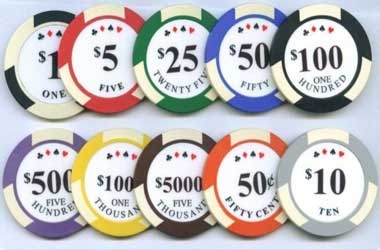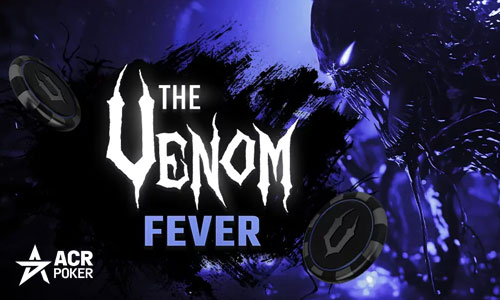Guide to Poker Chip Colors and Value

Introducing poker chips has helped standardize the game and expand its reach worldwide.
Although there is no universal formula for assigning colors and values to chips, some themes are common in poker events across the industry — regardless of whether it’s Razz, Stud, Omaha or another variation.
Since poker chips are the third most important element of the game (the other two being players and cards, obviously), it makes sense to be acquainted with how they work.
Our goal today is to introduce you to the various denominations, colors, and values of poker chips used in the two prevalent formats — cash games and tournaments.
Standard Poker Chip Values
At standalone poker rooms or poker lounges within casinos, the chips are marked, so there is no confusion about how much each chip is worth. A large font is generally used for the denominations to make it easy to distinguish between them. Additionally, each chip will probably have the name of the casino or poker room engraved somewhere.
In most “official” poker games, you’re provided with a set of poker chips with the following colors and values:
- White: $1
- Red: $5
- Green: $25
- Black: $100
Venues may offer additional colors, especially during tournaments.
- Yellow: $2
- Pink: $2.5
- Gray: $20
- Orange: $50
- Pink: $250
- Purple: $500
- Yellow (sometimes gray or orange): $1,000
- Light blue: $2,000
- Dark brown: $5,000
High-denomination chips ($250 and over) are seldom offered in casual games. These are usually only available in high-roller rooms or invite-only VIP lounges. Unlike low and mid-stake denominations, which are round-shaped, high-limit tokens are typically rectangular.
Major casino brands like Borgata, Caesars and MGM provide higher-stake denominations, including $5k, $10k, $25k, or even higher.
Auxiliary chips overlap in certain areas. For instance, some casinos in Las Vegas use orange chips for $10, while others use the same color for $1,000 chips. And since poker rules don’t require players to verbalize their bets, miscommunication can occur. To avoid confusion, some poker rooms design their higher-value chips to be larger than others.
Poker Chip Values: Cash Games vs. Tournaments
In cash games, poker chips are worth the same amount as the prize money they redeem — they represent their actual value in cash. Therefore, you can exchange a $25 chip for a $25 bill.
During tournaments, however, poker chip values differ from their actual value in dollars. A chip in tournament play is used to track each player’s progress across the event.
To that end, when you buy into a tournament, you get a predetermined amount of chips. For $500, you might get 100,000 in chip values.
Since the blinds constantly change in tournaments, a wider array of denominations (colors) is used. As the blinds reach higher levels, low-value chips are usually eliminated from play.
The chips of players who bust out of a tournament are distributed among the remaining players. Once you have accumulated all the chips in play, you have won the tournament and the predetermined prize pool. If the first-place prize is $100k, that’s what you’ll take home if you win the contest — regardless of how large your pot is at the end. Even if you had 10,000,000 in chip value, you’d still get $100k.
Poker Chip Values in Home Games
No rule dictates what denominations should be assigned to each color in “official games”. The same applies to home games. Your tournament format and chip configuration are entirely up to you and your friends you could even use alternatives to poker chips if you wanted to.

Three factors determine the size of the chip stack: the number of players, blind levels, and risk aversion; in other words, the betting patterns of the players.
You should arrange the chips in a ratio of 4:3:2:1 from lowest to highest denomination if you’re using a basic set with four colors (chip values).
The more players there are in the game, the more chips you should include. For games with up to 10 players, you should have a chipset of at least 500 tokens. At larger events (20+ players), at least 1,000 tokens should be readily available.
Final Thoughts
Understanding poker chip denominations and colors is imperative, especially if you plan on participating in high-roller tournaments that use various values. Without this knowledge, you might end up betting more than you want and disrupting your tournament strategy.
It won’t take long to figure out how to connect the chip’s price to its color. You should memorize these things if you are just starting to avoid costly mistakes and unpleasant situations. This article has hopefully helped you learn the ropes.
Hi, I am the Chief Editor of top10pokersites.net, this site is dedicated to all thing poker. I have been working around the poker industry for the last 15 years, with different brands. The main purpose of this site is to keep you uptodate with the industry and offer you the best deals around.










